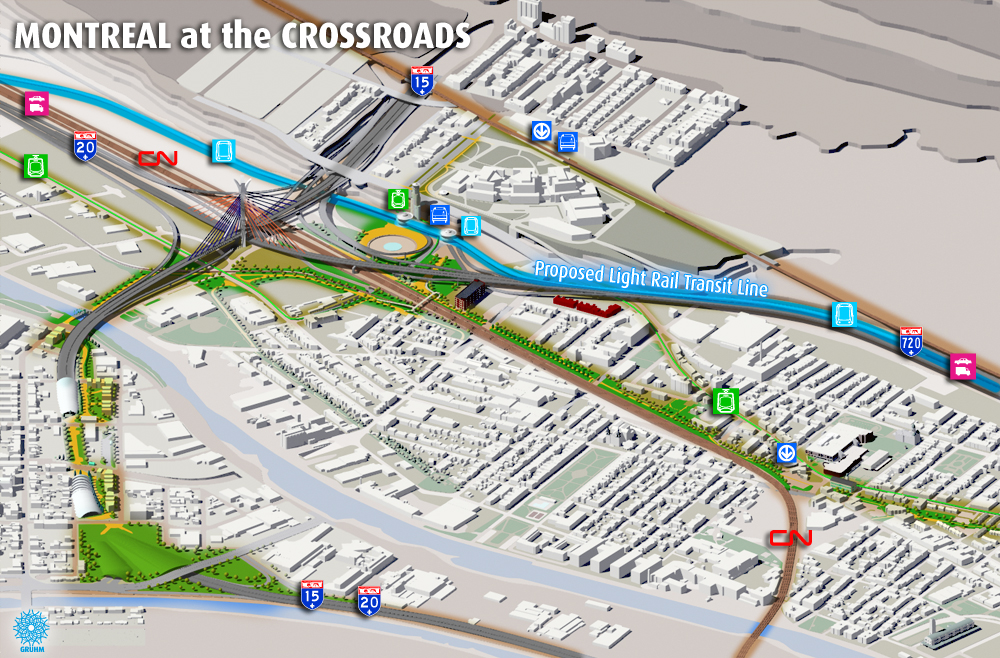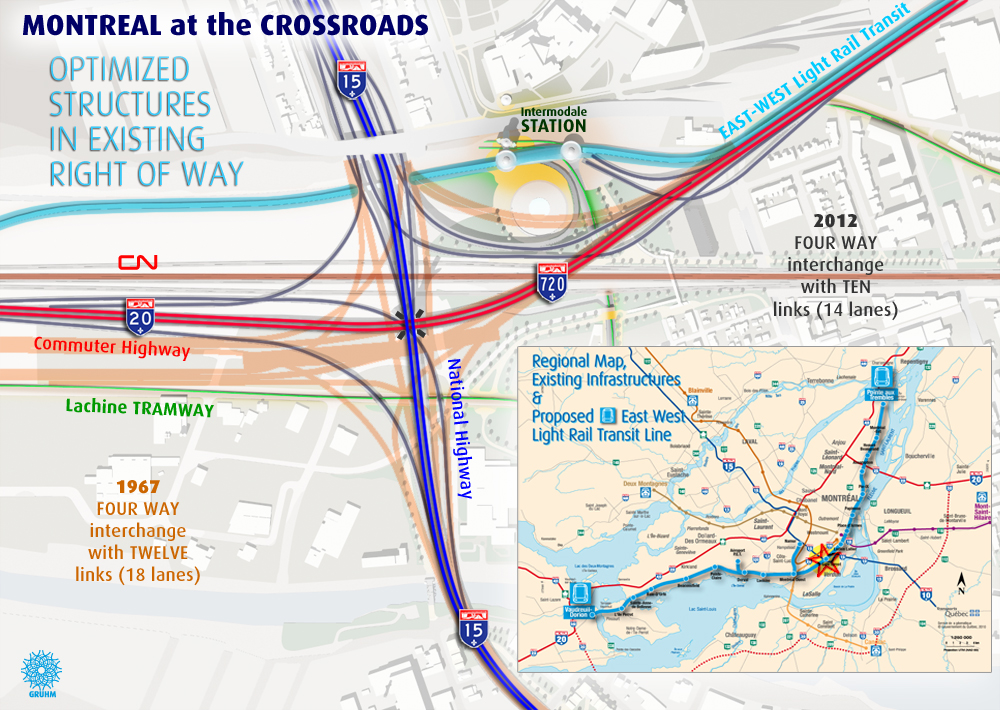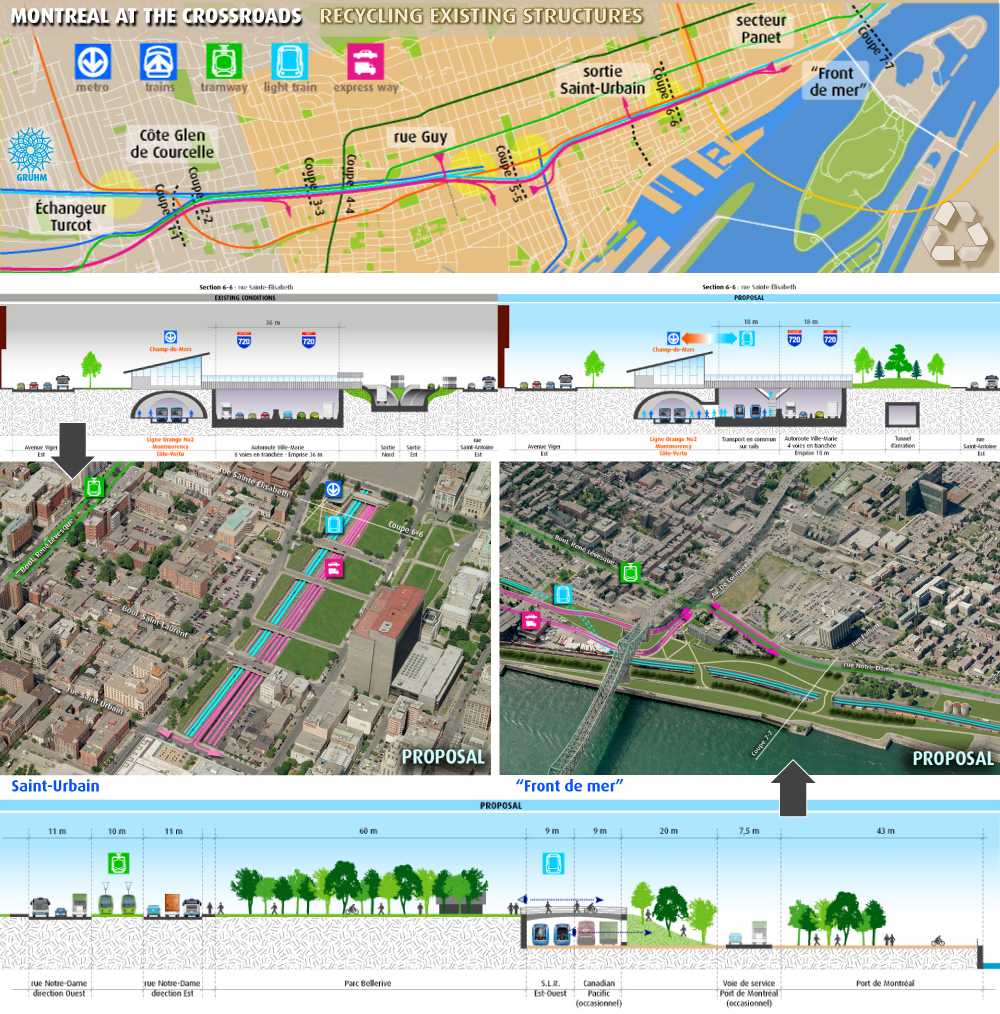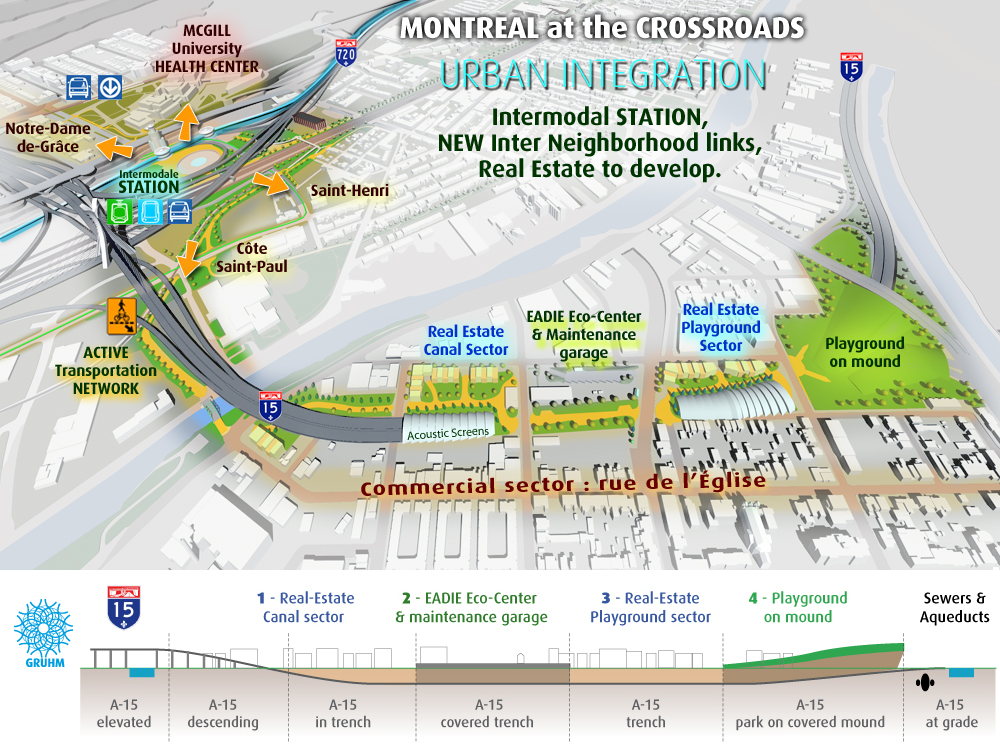Montréal’s current highway system, initiated in the late 50’s, was built with the view of optimizing car and truck transit. The guiding principles behind the construction of these infrastructures were inspired by the prevalent attitude of the 1956 American Interstate Highway Program.
Concrete was the material used throughout Montréal’s system whereas the city experiences extreme winters and snow removal relying heavily on salt. Today, decades after their construction, many of these aggressively imposed large-scale elevated highways surrounding Montréal are reaching the end of their useful life. As the need to rebuild the infrastructures is fast approaching, there is hope a more thoughtful project can take shape despite unsatisfactory proposals from current governments. |
|
Reactivating Montreal’s highway debates, (c1965-1975), the GRUHM, a group of independent architects and planners along with concerned citizens and university researchers, has developed a city-friendly project attempting to repair past mistakes while planning for the future.
The key to this proposal is to bury national highways and to integrate transit corridors for the exclusive use of new light rail transit systems in other infrastructures to be rebuilt.
Invariably, a complementary network of active transport circuits to link up to local community services is properly integrated into the scheme also promoting restructuring of the urban fabric at a much smaller scale. |
|
The result is an approach that drastically reduces energy consumption and paves the way to the type of urban mobility concept most likely to prevail this century.
Major cities worldwide have already recognized the need to transform their congested transportation systems by replacing their obsolete infrastructures with neighbourhood-friendly urban boulevards and public transportation corridors in an integrated multimodal way.
By reducing the overall imprint of the future infrastructures, the project skillfully and powerfully ups the stakes in city efforts to truly deliver on the promise of sustainable transport for the 21st Century. |







